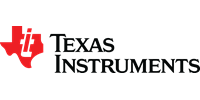Solution InstaSPIN-BLDC
Welcome to the Texas Instruments (TI) Motor Control Solution InstaSPIN-BLDC product training module. Now, the technology behind InstaSPIN-BLDC is actually not new. The concept has been around for quite a while and it is based upon the age-old principle that simple is actually better. TI has now taken this technology and the designer has repackaged it into a form that will be very easy to use by the customer. This is actually a sensorless commutation algorithm and the best thing about it is how incredibly easy it is use. To get ones motor spinning will take very, very little effort. In fact, TI has field tested this on many different motors and in each case the designer was able to get the motor up and running in a very short time. So before this presentation goes into the details of what InstaSPIN is, it will provide an overview of brushless DC motor control in general to set the stage for this technology.
PTM Published on: 2013-01-24







